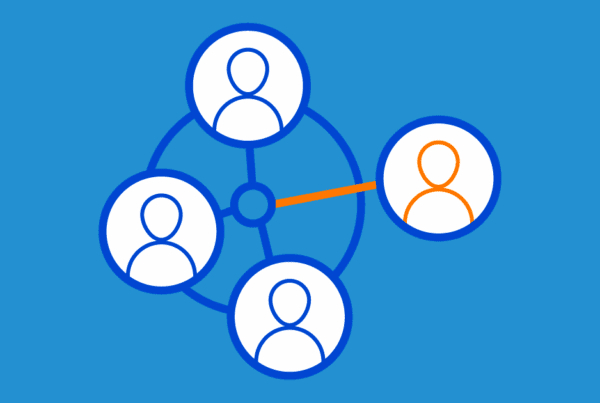
RISE OF TEDS IN THE AGE OF DIGITAL DOMINANCE
(5TH article in a series – by Duncan Robins)
During the next decade, communities, organizations and the nature of work will be transformed on a global scale and at an accelerating pace.
The Industrial Era will give way to the Age of Digital Dominance as Millennials become the working majority and robots (in both physical and digital forms) become ubiquitous.
For much of the Industrial Era, physical infrastructure was the backbone of the industrial powerhouses. Top-down, rigid, function-based, organizational structures demanded repetitive, predictable production from their loyal Baby Boomer workforces. In the Age of Digital Dominance, however, digital technology will be at the core of businesses that dominate their global markets. Agility and creativity will be the ‘ask’ of Millennial workforces that will seek to use their skills while collaborating on team-based challenges in worker-employer compacts that are more fluid and independent. This radical shift will require organizations and communities to reconsider every aspect of the Boomer-era, employee-employer relationship.
Technology-Enabled, Distributed Services organizations, or TEDS for short, will become the most dominant organizational structure of corporations during the Age of Digital Dominance. Technology in the form of digital platforms will connect their distributed workforces, support their marketplaces and will enable their market-facing applications.
THEY SAW. THEY CAME. THEY CONQUERED.
TEDS represent a new form of organization, perhaps better described as an ecosystem, that will dominate global markets for years after the Industrial Era has given way to the Age of Digital Dominance. The most successful of these firms share many of the same organizational characteristics. They all: 1) are technology-enabled; 2) have distributed workforces; 3) mix physical and digital assets in their service offerings; and 4) are extremely agile.
Many of these companies/ecosystems include a platform, a marketplace, and an application (App) or software-as-a-service (SaaS) offering. The most successful have already figured out how to incorporate distributed workforces and physical assets in novel legal structures that allow for maximum agility for the TEDS while offering opportunity and flexibility to their workforces.
The largest TEDS have evolved into voracious organizations devouring markets and industries at a fantastic rate. To understand the rate of their ascendancy, consider that in 1995, twelve years after AOL got its start, the top 15 internet companies were worth $17 billion. In 2015, twelve years after Facebook launched its social media platform, the top platform companies (the precursors to TEDS) were worth $2.5 trillion. Driven by TEDS, the most advanced form of these digitally-based organizations, the digital share of the global economy is expected to grow from 15% in 2015 to 25% in 2020(1), signaling that the Age of Digital Dominance will have arrived.
As depicted in Figure 1. The Rise of TEDS in the AGE of Digital Dominance, TEDS are consuming markets and industries in both the physical and digital realms. This should concern businesses operating in traditional industries as TEDS play a winner-take all, global game. The TEDS include Facebook, Alphabet (Google), Amazon, Apple, Uber, Lyft, AirBnB, and others that aren’t just out to disrupt markets and industries, they want to dominate them.
Note: This graph is meant to provoke discussions. It illustrates the relative positions of companies and industries when comparing their organizational structures with their core assets used to create value.
Located in the lower left quadrant are the traditional sectors of the economy, and many of businesses that were Industrial Era titans, with their centralized organizational structures and physical assets. In the upper right quadrant are the New Economy darlings, those built almost entirely with digital infrastructure and distributed workforces. TEDS have figured out how to combine technology, distributed workforces and physical assets in a way that gives them a huge competitive advantage over both their Traditional and New Economy rivals.

BACKLASH TO TEDS
Competitors, communities and labor organizations have attempted to use the courts, legislatures and the public to slow down the rapid growth of TEDS with the goal of protecting local business, workers and consumers. For example, Facebook and Alphabet have been fighting antitrust and privacy lawsuits. Uber and Lyft have been battling city ordinances related to tradition taxi licensing requirements. AirBnB is defending its practices against lawsuits over reporting and local taxation requirements for short-term, hotel stays. And recently the California legislature, with the backing of labor organizations, has put employers of contract employees on notice with legislation that is attempting to reclassify almost every contract worker in California as an employee (with special focus on Uber and Lyft).
TEDS operate in stark contrast to Boomer-era, hierarchical organizations. Technology has enabled these new companies to redefine the worker-employer paradigm in such a way that courts, legislators and officials world-wide are finding it difficult to apply outdated laws, policies and practices. Peering in from the outside, it is easy to see why. Simple questions are difficult to answer. What is the relationship between the organization and the driver? Are the drivers, independent contractors, sole proprietors, or employees? Are the passengers the customers of the drivers or the ride-share companies, or both?
Perhaps these efforts would be better spent aligning with, rather than fighting, the future of work. In the future, we expect five workplace trends to prevail: 1) Workforces and technology will morph as physical robots and digital bots become ubiquitous; 2) The definitions for ‘employee’ and ‘job’ will become blurred as organizations as they incorporate more flexible staffing models; 3) The nature of work will be defined more by teams and their digital collaboration tools than by centralized, corporate-controlled, physical spaces and organizational structures; 4) Re-skilling programs will become competitive advantages of organizations, required of, but also sought after by the skills-based workforce; 5) Traditional employee benefits like healthcare and 401Ks will become decoupled from workplaces.
MILLENNIALS WILL CHOOSE THEIR FUTURE
Balance will once again be restored, but the counter force will come from Millennials as workers, consumers and community members. However, many current politicians, officials and community leaders may be surprised by what the Millennials demand and how powerful they will be.
Most freelancing Millennials may not fight for ‘employee’ status. In fact, according to polls, the primary motivation of Millennials who freelance is independence. 42% of Millennials participated in the Gig Economy in 2018, with many more interested in doing contract work in the near future. Those Millennials that are successful freelancers do not necessarily want to be an employee. However, they are interested in benefits that are currently tied to being an employee: 1) work-related training; 2) access to healthcare; and 3) tax incentives to invest in retirement. Technically, none of these benefits need to be tied to an employer-employee relationship.
Freelancers are also very politically active. 80% of freelancers expect to vote in the next elections, almost twice the rate of non-freelancers. Over 80% of full-time freelancers would cross party lines to support candidates that support their needs. They also vote with their wallets and feet, supporting organizations that align with their values, boycotting ones that don’t, and moving to communities that support their ‘work as life’ choices(3).
CALL TO ACTION
The transformation from the Industrial Era to the Age of Digital Dominance is assured. This transformation is underway. The six forces driving the changes are massive, unstoppable and aligned.
Unfortunately, some industries, communities and workers will be impacted more than others. Those of us concerned about the future of work and life in rural and middle America must come together to chart a path forward. My community (and its small businesses) is one of those at risk of falling further behind. We, in the community, are engaged and motivated. But, we like many other communities facing similar challenges, can’t do it alone. We need a movement that results in new education paradigms, business development, investment in infrastructure, innovative tax incentives and new privacy, antitrust and intellectual property laws. We can do this if we work together.
Many organizations and thought leaders are attempting to predict the future of work during this time of unprecedented change. This article is part of a series written to add to that dialog with hopes of energizing action on solutions that will drive economic development and prosperity for workers, businesses and communities in rural and middle America. (Author note: This articles was originally written six months before Covid-19 hit. The pandemic will only accelerate the trends described).
***
Other articles in this series:
(1) Robins, Duncan, The Future of Work is Here, September 2019, The Future of Work.org
(2) Robins, Duncan, The Transformation is Inevitable, September 2019, The Future of Work.org
(3) Robins, Duncan, Winners and Losers, September 2019, The Future of Work.org
(4) Robins, Duncan, Organizations of the Future, September 2019, The Future of Work.org
(5) Robins, Duncan, The Age of Digital Dominance, September 2019, The Future of Work.org
Notes:
(1) Daugherty, Paul, Marc Carrel-Billiard, Michael Blitz, Technology Vision 2016—Platform Economy: Technology-driven business model innovation from the outside in; Accenture, 2016
(2) Freelancing in America, Edelman Intelligence, a report commissioned by UpWork and Freelancers Union, 2018, UpWork.com
Orginally posted on www.thefutureofwork.org
FlexTal is the #1 flexible talent matching platform. Every day, we match organizations with pro-level independent contractors for flexible hourly and project-based engagements. Match with the Right Pro, Right Now.



